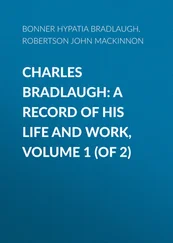Brad Stevens - Monte Hellman - His Life and Films
Здесь есть возможность читать онлайн «Brad Stevens - Monte Hellman - His Life and Films» весь текст электронной книги совершенно бесплатно (целиком полную версию без сокращений). В некоторых случаях можно слушать аудио, скачать через торрент в формате fb2 и присутствует краткое содержание. Год выпуска: 0101, Издательство: McFarland & Company, Жанр: Старинная литература, на английском языке. Описание произведения, (предисловие) а так же отзывы посетителей доступны на портале библиотеки ЛибКат.
- Название:Monte Hellman: His Life and Films
- Автор:
- Издательство:McFarland & Company
- Жанр:
- Год:0101
- ISBN:нет данных
- Рейтинг книги:4 / 5. Голосов: 1
-
Избранное:Добавить в избранное
- Отзывы:
-
Ваша оценка:
- 80
- 1
- 2
- 3
- 4
- 5
Monte Hellman: His Life and Films: краткое содержание, описание и аннотация
Предлагаем к чтению аннотацию, описание, краткое содержание или предисловие (зависит от того, что написал сам автор книги «Monte Hellman: His Life and Films»). Если вы не нашли необходимую информацию о книге — напишите в комментариях, мы постараемся отыскать её.
Monte Hellman: His Life and Films — читать онлайн бесплатно полную книгу (весь текст) целиком
Ниже представлен текст книги, разбитый по страницам. Система сохранения места последней прочитанной страницы, позволяет с удобством читать онлайн бесплатно книгу «Monte Hellman: His Life and Films», без необходимости каждый раз заново искать на чём Вы остановились. Поставьте закладку, и сможете в любой момент перейти на страницу, на которой закончили чтение.
Интервал:
Закладка:
The last of Hellman's 1963 additions, which clocks in at 3m 27s, appears 42m 49s into Sinister's transfer, soon after Renzo and his passengers arrive on the island. It begins with XK150 walking along a beach. Finding a conveniently located payphone, he places a call to XK120 at the Santo Domingo bar. Another cryptic conversation ensues ("I'll give you all my utilities and all my railroads for Park Place" says XK150, to which XK120 replies "Not a chance. Go directly to jail. Do not pass go. Do not collect the $200"), during which a smiling man (Richard Sinatra, here making his third and final appearance in Hellman's Filmgroup expansions) walks up to XK150 and waits to use the phone. XK150 walks away past an old man with a walking stick: "The man with a stick is an actor named Charles Macauley, who was my next-door neighbor at the time. It was on Larrabee Street, just off the Sunset Strip. I had a lot of future stars/directors/producers as neighbors at that time. Now the street is occupied mostly by prostitutes." 18
Considering the circumstances, the sheer verve of Hellman's footage is astonishing. The opening sequence — with its hand-held camerawork, inspired use of locations and satirical deconstruction of cinematic clichés—has a certain nouvelle vague quality, the ironic attitude towards the secret agent and that ideal of masculine detachment he represents anticipating Jean-Luc Godard's Alphaville (1965). The presence of Jaclyn Hellman (Anna Karina to Robert Towne's Eddie Constantine?), whom Monte recalls being pregnant with their daughter Melissa at the time of filming, suggests a personal investment in the material (as does the presence of Karl Lucas, an actor who had appeared in Hellman's production of The Cave Dwellers , as the Santo Domingo's bartender), and the dialogue between XK150 and XK120 (a character mentioned but not seen in the original film) foreshadows the life-as-game motif that would become such an important aspect of the director's work. Similarly, the rocky beach XK150 walks across in the third sequence introduces a landscape to which Hellman would frequently return. The title song (added by Hellman on the assumption that a film called Creature from the Haunted Sea should have a title song, and obviously intended as a parody of The Lady from Shanghai ) also marks the beginning of an important professional collaboration, since it was written by Carole Eastman.
Although the film was originally in color, television prints of Last Woman on Earth were printed in black and white to match Hellman's additions. A video of the expanded edition recorded from U.S. television runs 71m 24s, including 7m 21s shot in 1963. Hellman's first scene lasts 2m 41s and appears 9m 31s in, after Martin has visited Evelyn's room to collect some legal papers. At this point, Hellman adds a scene in a hotel bar noticeably different from that of the original film — in fact, it's the bar where Hellman shot his pre-credits sequence for Creature (with the same actor, Karl Lucas, playing the bartender — he's even wearing the same shirt). The scene begins with the bartender placing a drink in front of Harold just before Evelyn arrives. After a brief discussion, during which Evelyn reveals her unhappiness ("It's no different here than it was in the States. Even here lawyers chase after you, your business drags behind you"), Harold leaves.
Hellman's second sequence appears 40m 49s in and lasts 4m 40s. It begins with a close-up of a corpse (Jaclyn Hellman) on a beach (the same location through which Robert Towne walked in the third scene added to Creature ) . Martin looks down at her, wanders off into the distance, climbs some rocks and emerges on a different part of the beach, where he finds Evelyn and Harold. Martin tells Harold he has been on "a blind date ... about a hundred yards up the beach," and Harold goes to see what he is talking about. After Harold leaves, Evelyn sits on a rock and has a conversation with Martin, who admits to disliking Harold "because he's either vain enough or stupid enough to think that it really matters what happens to us." The sequence ends as Harold returns, then walks away down the beach, followed by Martin and Evelyn.
The bar sequence reveals how much complexity Hellman can bring to a clichéd situation. Rather than allow the relationship to remain at the "neglected-woman married to uncaring-macho-businessman" level, Hellman treats both characters with great sensitivity, the acting suggests many ambiguities and possibilities. The consequence of such even-handedness, however, is the sense of stasis that marks Hellman's two segments (and would soon become the defining feature of his work). The first sequence begins with Harold sitting alone and ends with Evelyn in the same position; despite the genuine attempts at communication and obvious need for companionship, the only progress is the swapping of one loneliness for another, and a similar pattern is discernible in the second sequence. Hellman's perception of existence in terms of "circles and circling back" is reflected in his filmmaking practice, which blatantly violates Hollywood's norms of narrative and character development. Shots (such as the long take here which starts with Harold walking away to find the corpse and finishes with him coming back), scenes, and often entire films, end by returning to their point of departure (a process literalized in the final frames of Two-Lane Blacktop , where the print itself returns to point zero), and the specifically circular nature of the Filmgroup expansions seems to have suggested the circle as the logical structural figure (cf. Factor circling around behind the enemy in Ski Troop Attack ) . Both Last Woman on Earth sequences end as they began, with individuals trapped in states of isolation, alienated from each other and their surroundings. Martin's movement across the beach, through the sea and over some rocks implies an elemental struggle he can neither lose nor win, since there is no clear objective he might reach, and in this he resembles the typical Hellman protagonist, obsessed with games and competitions but incapable of formulating worthwhile goals.
In order to understand the beach scene, we might ask of what it consists. On the one hand, there are fragile bodies struggling against nature and their own neurotic impulses while desperately trying to forge emotional connections; on the other, there are harsh landscapes whose perfection dwarfs all human aspiration. Uniting both elements is the figure of the corpse, which introduces the sequence and casts a shadow over subsequent events. It is through the corpse lying on the beach that the body reaches an accommodation with, and actually becomes part of, the landscape. For Hellman, mortality provides a context against which our actions must be judged. But this is not a form of pessimism. On the contrary it subserves a critique of death-oriented masculine obsession that is at least implicitly feminist, and is often explicitly articulated by female characters. It is Jaclyn Hellman, Last Woman 's corpse, who, in Flight to Fury , speaks for the filmmaker when she rejects Jack Nicholson's insistence that death provides a form of "punctuation": "You're focusing on the punctuation and forgetting the sentence."
Chapter 3
The Terror (1963)
Throughout early Autumn 1962, Roger Corman had been busy shooting The Young Racers on various European locations. Among his crew was sound recordist Francis Coppola. When the production wrapped, Corman offered Coppola some spare change to make Dementia 13 in Ireland. Coppola shot the film in three weeks, then visited Yugoslavia to "Americanize" the dialogue for Rados Novakovic's Operation: Titian , a thriller Corman had acquired. 1 Titian 's unusually lengthy shoot lasted from late August to mid-December, during which time Corman had returned to America and begun filming The Raven for AIP. Boris Karloff was the star. In late September, with The Raven nearing the end of its 15-day schedule, Corman asked Leo Gordon to write The Terror , a Gothic horror film set in 1806. The Raven wrapped on a Friday, and The Terror went into production—at AIP's expense and with the clapboard still bearing the title The Raven— the following Monday. Karloff was cast as Baron Victor Frederick von Leppe, Jack Nicholson ( The Raven' s juvenile lead) as Andre Duvalier, a lieutenant in Napoleon's army, Nicholson's then-wife Sandra Knight as Helene, and Dick Miller as the Baron's servant Stefan. Corman managed to complete an impressive amount of footage in a mere two days.
Читать дальшеИнтервал:
Закладка:
Похожие книги на «Monte Hellman: His Life and Films»
Представляем Вашему вниманию похожие книги на «Monte Hellman: His Life and Films» списком для выбора. Мы отобрали схожую по названию и смыслу литературу в надежде предоставить читателям больше вариантов отыскать новые, интересные, ещё непрочитанные произведения.
Обсуждение, отзывы о книге «Monte Hellman: His Life and Films» и просто собственные мнения читателей. Оставьте ваши комментарии, напишите, что Вы думаете о произведении, его смысле или главных героях. Укажите что конкретно понравилось, а что нет, и почему Вы так считаете.





![William Frith - John Leech, His Life and Work. Vol. 1 [of 2]](/books/747171/william-frith-john-leech-his-life-and-work-vol-thumb.webp)


![William Frith - John Leech, His Life and Work, Vol. 2 [of 2]](/books/748201/william-frith-john-leech-his-life-and-work-vol-thumb.webp)


